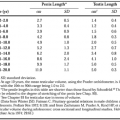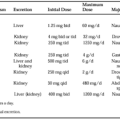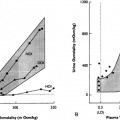CLINICAL MANIFESTATIONS OF ADRENOCORTICOTROPIN DEFICIENCY
A number of pituitary pathologies can lead to ACTH deficiency, including pituitary tumor, autoimmune lymphocytic hypophysitis (often postpartum), and granulomatous infiltration. Pituitary hormone deficiencies occasionally develop without apparent cause, although the most common cause in adults is a pituitary tumor, or treatment with surgery or irradiation.
ACTH deficiency is generally a late manifestation of pituitary disease, following growth hormone deficiency (poor growth in children), gonadotropin deficiency (loss of menses in women, loss of libido in men), and hypothyroidism (see Chap. 45) that is generally mild in pituitary disease but may be symptomatic with fatigue and cold intolerance.
ACTH deficiency produces hypoadrenalism. Loss of pigmentation may be apparent, particularly in children. Hypoadrenalism commonly causes fatigue and hypotension, which is often postural. Hyponatremia may be evident because glucocorticoids contribute to the maintenance of renal free water excretion; symptomatic hypoglycemia can occur. Mineralocorticoid
production is regulated chiefly by angiotensin II and the potassium ion, thus mineralocorticoid deficiency does not develop in states of ACTH deficiency.
production is regulated chiefly by angiotensin II and the potassium ion, thus mineralocorticoid deficiency does not develop in states of ACTH deficiency.
Stay updated, free articles. Join our Telegram channel

Full access? Get Clinical Tree







